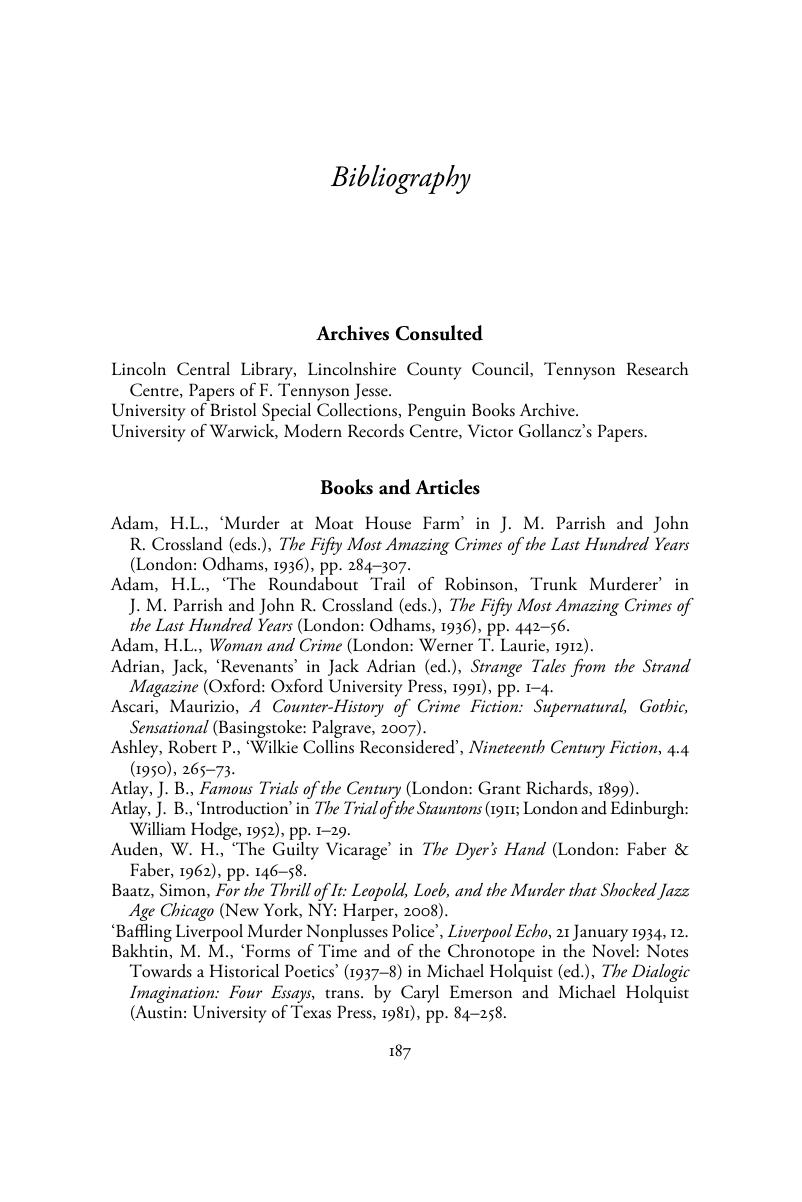Book contents
- Crime Writing in Interwar Britain
- Crime Writing in Interwar Britain
- Copyright page
- Contents
- Acknowledgements
- Introduction
- Chapter 1 Revisiting Victorian Sensations
- Chapter 2 F. Tennyson Jesse and the Modern Murderer
- Chapter 3 In Search of the Perfect Crime
- Chapter 4 Dangerous Men in Interwar Writing
- Coda
- Bibliography
- Index
- References
Bibliography
Published online by Cambridge University Press: 11 August 2017
- Crime Writing in Interwar Britain
- Crime Writing in Interwar Britain
- Copyright page
- Contents
- Acknowledgements
- Introduction
- Chapter 1 Revisiting Victorian Sensations
- Chapter 2 F. Tennyson Jesse and the Modern Murderer
- Chapter 3 In Search of the Perfect Crime
- Chapter 4 Dangerous Men in Interwar Writing
- Coda
- Bibliography
- Index
- References
Summary

- Type
- Chapter
- Information
- Crime Writing in Interwar BritainFact and Fiction in the Golden Age, pp. 187 - 201Publisher: Cambridge University PressPrint publication year: 2017



